*This post may contain affiliate links. Please see my disclosure policy to learn more.
This easy, step-by-step recipe will teach you how to make delicious fermented vegetables with potential health benefits. Learn more about this tasty twist on veggies! This recipe is vegan and low carb.
“Fermented veggies, fantastic, love them immediate benefit on the stomach.” ~Ellen
Table of Contents
- What are fermented foods?
- What is lacto fermentation?
- Are fermented vegetables good for you?
- How to ferment veggies
- Storage
- Nutrition information
- Tips for novice fermenters
- Food safe storage and handling
- Which vegetables can be fermented?
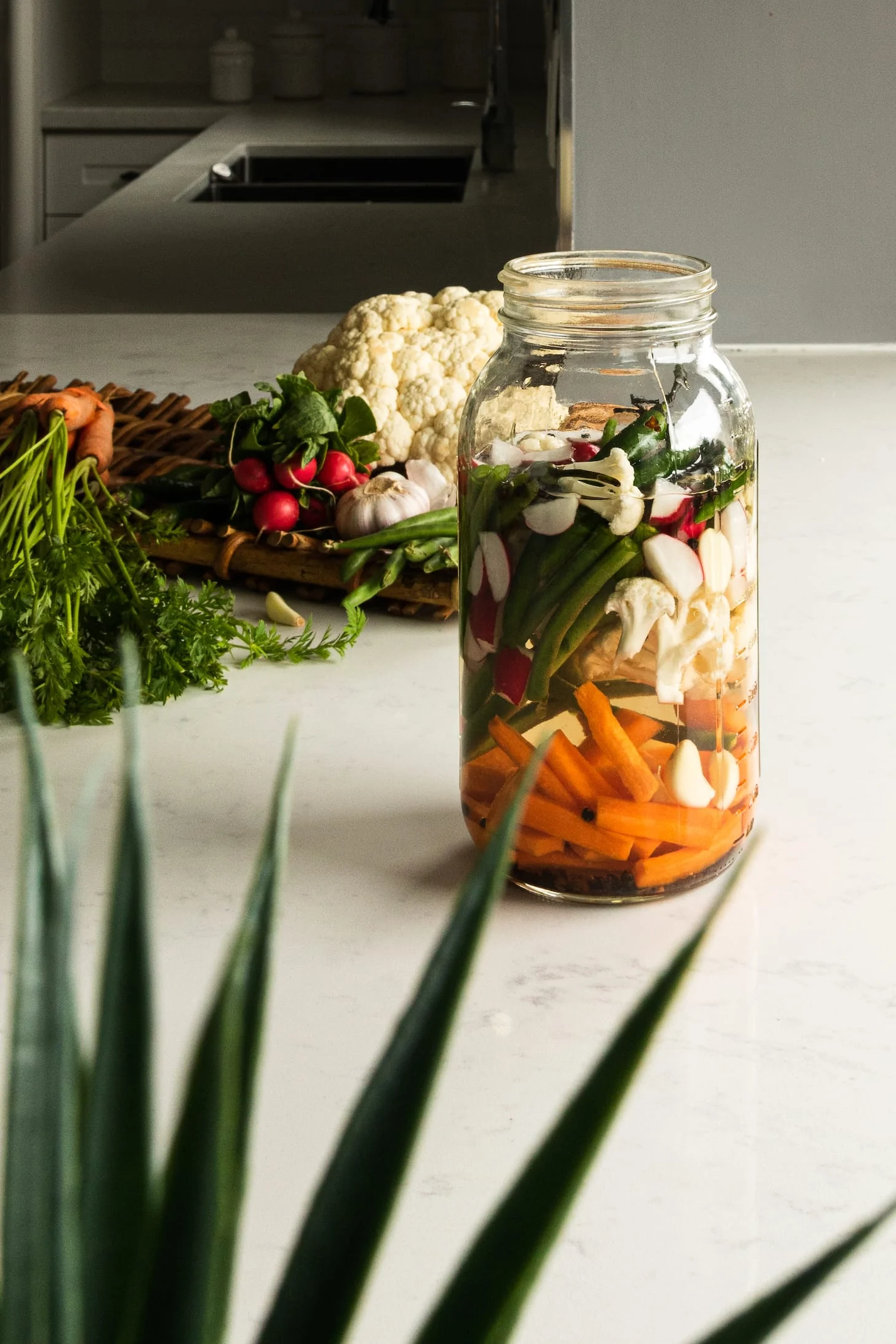
Fermenting vegetables is an ancient form of food preservation and one of the easiest to pull off. As a registered dietitian and certified diabetes educator, I am super excited to walk you through – step by step – how to ferment a selection of common vegetables: cauliflower, carrots, beans, and radishes with garlic and chillies, to create a delicious and nutritious side that may support a healthy gut.
Here’s a beginner’s guide to lacto-fermentation to help set you up for success. It’s particularly helpful if you’re just starting out and feeling a little unsure.
And if you’re on the hunt for gut healing foods, I hope you’ll be inspired by my deep dive into this topic.
This easy fermented vegetables recipe results in crisp and tart veggies and is a nutritious way to enjoy and preserve a variety of your favourite vegetables! While I often prepare this at home, I prioritize including it in my repertoire, especially during Ramadan, to promote gut health. It’s a staple in my collection of healthy Ramadan recipes.
If you’re craving more gut-healthy recipes, savour the vibrancy of this Roasted Pumpkin Arugula Salad—a nutrient-packed delight. For a delectable treat, indulge in this Apple Pie Smoothie with Oats and Greek Yogurt, delivering a perfect blend of natural sweetness and nutrition. And when those late-night cravings hit, turn to my go-to: Fruity Vanilla Greek Yogurt Bark with Almonds—satisfying, delicious, and gut-friendly. Happy eating!
What are fermented foods?
We often hear about fresh foods being the best for us (and rightly so). But these days, we’re hearing more and more about the health benefits of fermented foods. Examples of fermented foods are:
- sauerkraut
- kimchi
- pickles
- yogurt
- tempeh
- and miso
What is lacto fermentation?
Lacto-fermentation of foods is an ancient art. It’s been practiced for thousands of years as a way to preserve different foods. The process breaks down many vitamins and other nutrients into more easily digestible forms. Additionally, lacto-fermentation might increase the palatability and nutritional quality of food.
The majority of lacto-fermented foods are produced from raw veggies without the use of heat. Lacto-fermentation may appear complicated and perplexing to those who are unfamiliar with it. It’s really not! And no, it has nothing to do with dairy.
Lactic acid is the acid produced by lactic bacteria. On the surface of all fruits and vegetables, there are good bacteria such as Lactobacillus. These bacteria convert the sugars in food into lactic acid in an anaerobic (oxygen-free) environment.
It’s this compound that inhibits harmful germs while also acting as a preservative, which protects the vegetables from spoilage. In other words, lacto fermentation is the culturing of foods with lactic acid bacteria.
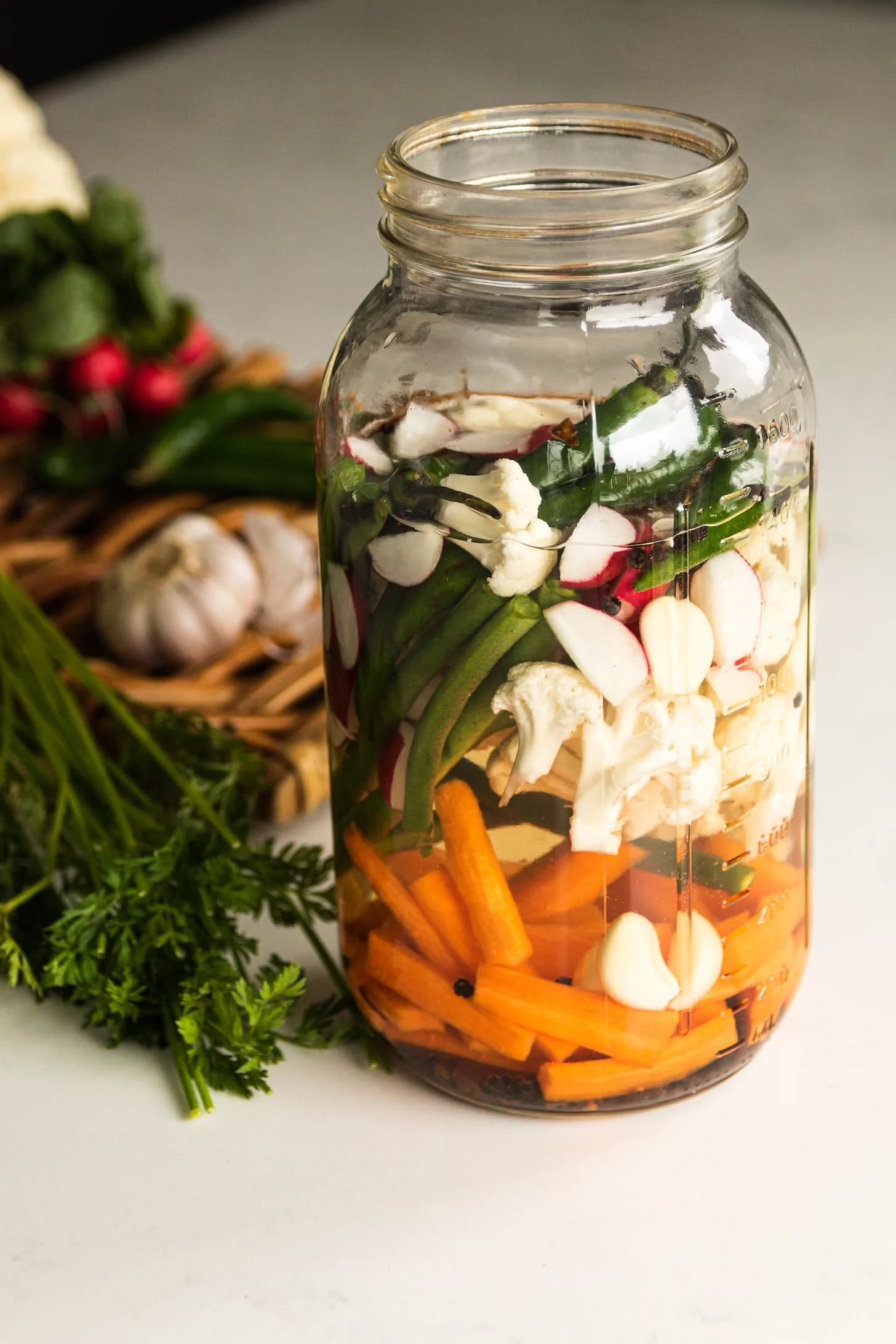
Are fermented vegetables good for you?
Health benefits of fermented foods
More than 1012 microorganisms dwell in the human digestive system. This complex ecosystem protects against infections, absorbs nutrients from meals, and controls the immune system.
The gut microbiota is also highly resilient; however, several factors such as antibiotics, stress, and illness may disrupt it, resulting in dysbiosis. The capacity of food and dietary components to modify the gut microbiome, redress dysbiosis, and enhance human health is now well-established
Dysbiosis generally means “disbalance” of the commensal microbiota (bacterial community). This usually implies a shift in the relative abundance of specific bacterial species within the digestive system. Disruption in the bacterial community is often associated with illness, specifically autoimmune conditions and metabolic diseases like diabetes, multiple sclerosis, and inflammatory bowel disease.
Many things can influence the types of bacteria in your gut. Fibres and prebiotics that are fermented can help certain types of bacteria grow. You can also change the types of bacteria in your gut by taking probiotics.
Probiotics, however, are short-term dwellers in the microbiome. Therefore, you need to be taking them frequently to reap the benefits.
Lacto fermented vegetables involve a process that’s thought to help increase the bioavailability of certain nutrients. This means they are more easily taken up in our bodies.
The process also destroys some anti-nutrient components of certain raw foods, such as oxalates and phytic acids. Antinutrients have been shown to reduce the body’s ability to absorb essential nutrients.
Are fermented foods good for gut health?
Fermented foods are thought to be good for gut health.
Scientists believe that the possible health benefits of fermented foods are because they are a source of probiotics; which might support gut health.
Recent studies suggest that microbes in our gut play a role in diabetes, heart disease, and immune function.
While there is compelling evidence from test tube studies that fermented foods are helpful for disease prevention, there aren’t enough clinical studies showing that fermented foods are good for gut health.
How to ferment veggies
Using raw vegetables as the starting ingredient increases the vitamin and mineral content of fermented vegetables.
Fermented vegetables made with raw veggies have a higher vitamin and mineral content than those prepared in other ways. Grating, shredding, chopping, slicing, or leaving whole are just a few methods to prepare the ingredients for fermentation. It’s entirely up to you. Carrots, radishes, and beets are dense vegetables, and lactic acid can penetrate these veggies more easily when chopped.
I picked some of my favourite colourful ingredients for this fermented veggies recipe to get a range of nutrients. Some I chopped, while others I left whole.
Preparing salt water and vegetables:
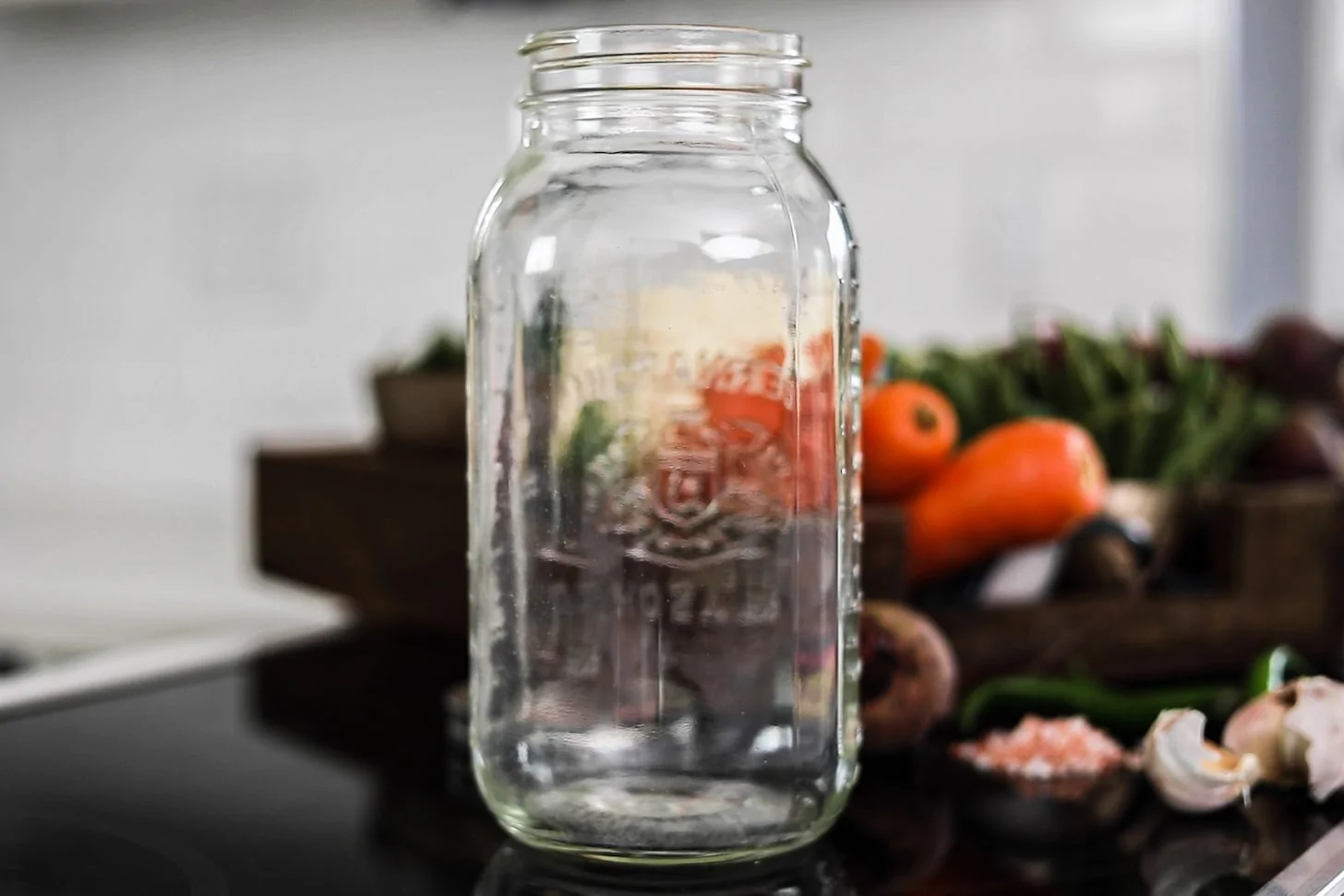
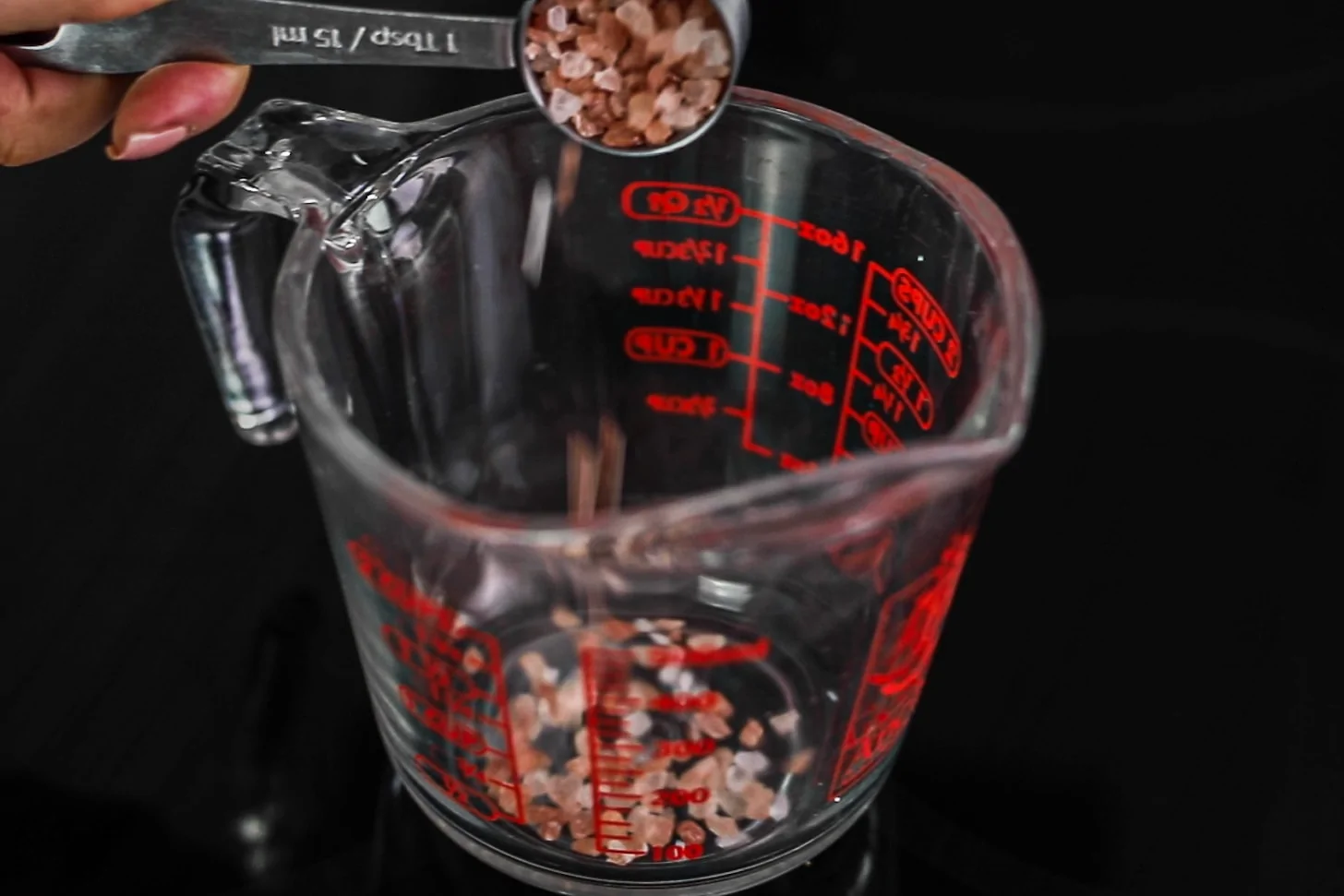
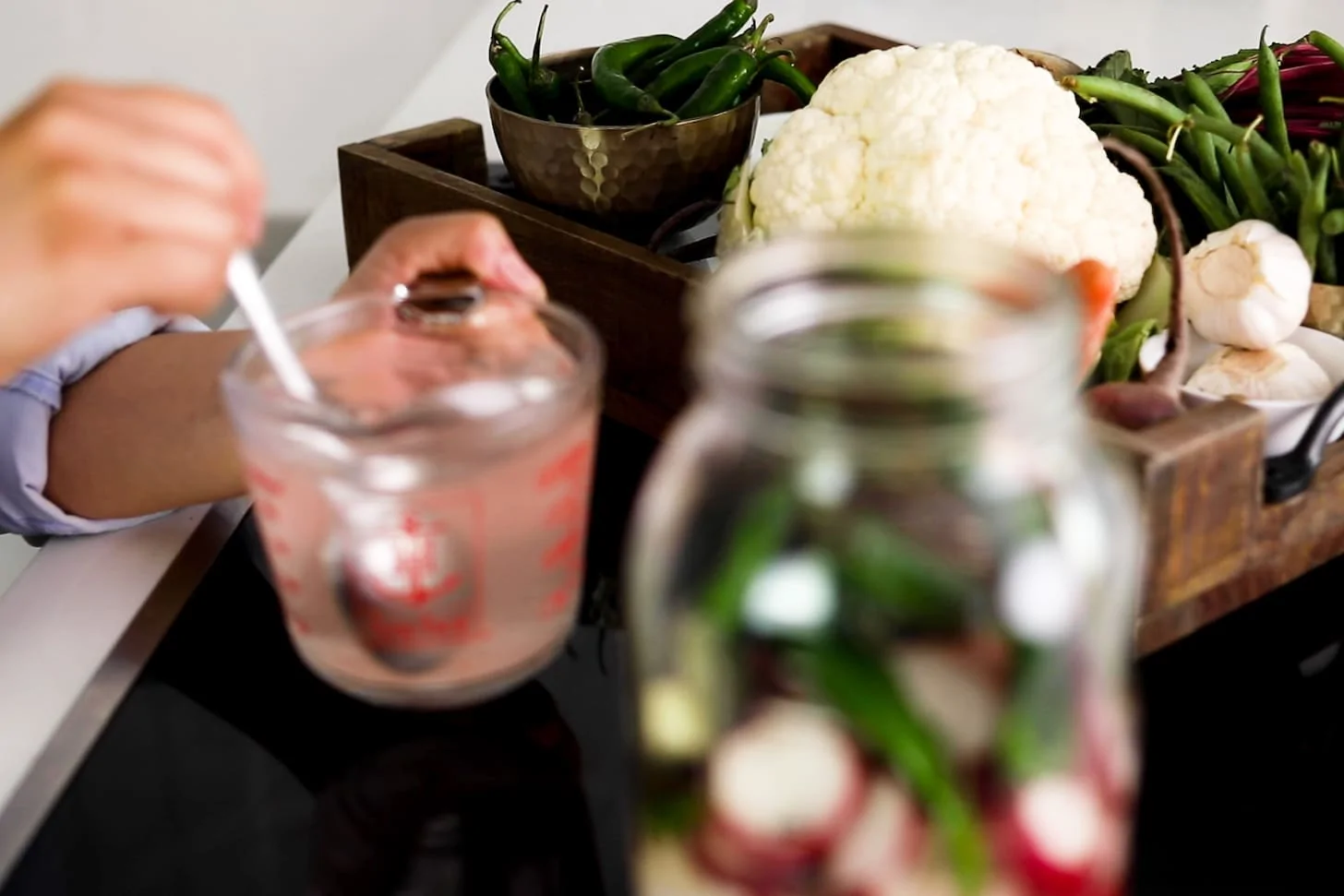
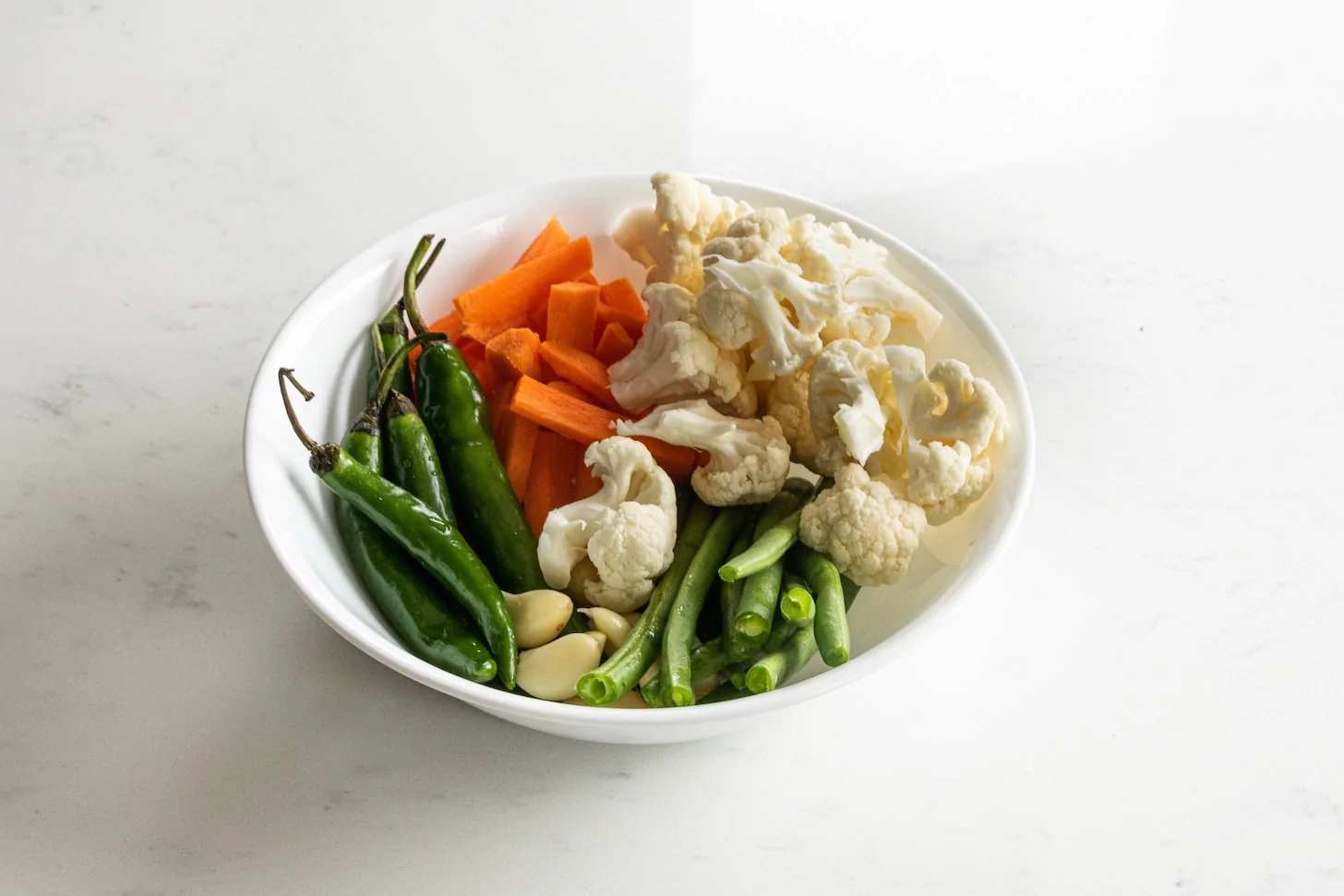
Setting up for fermentation:
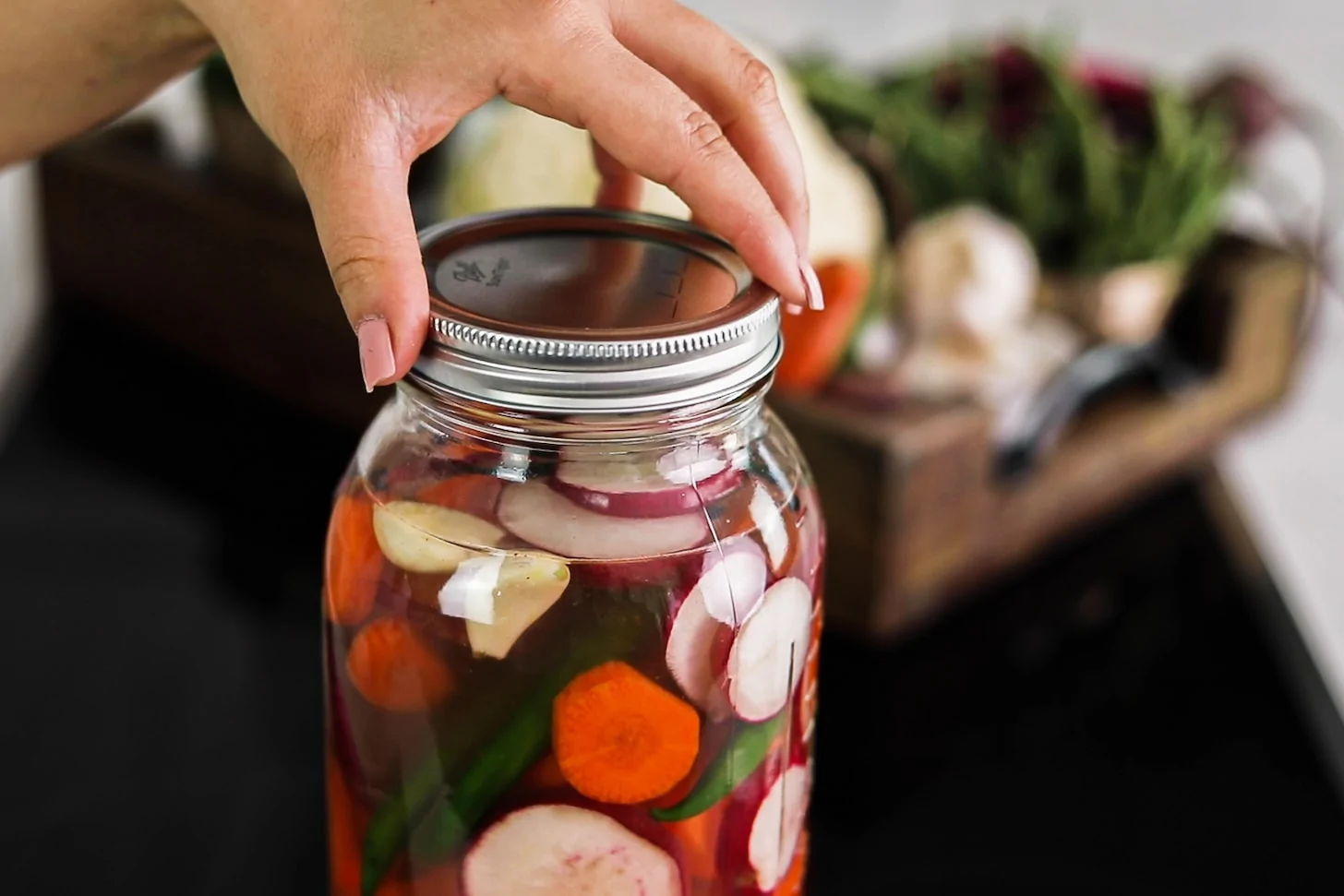
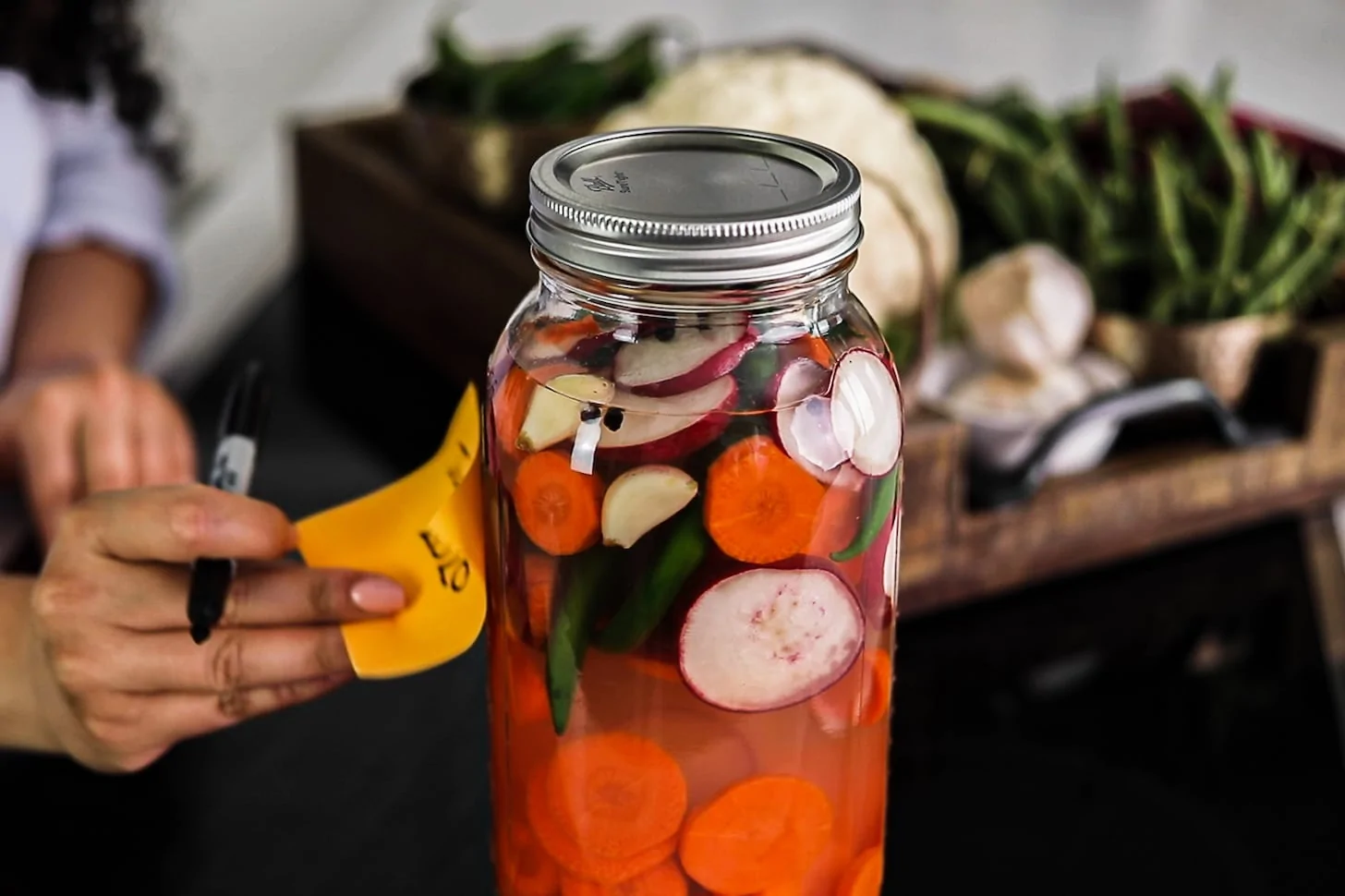
How do I know fermentation is complete?
I leave my jar out on the counter for 2-3 days (around 72 degrees Fahrenheit), then transfer it to the fridge. The following signs will tell you whether your veggies have fermented successfully:
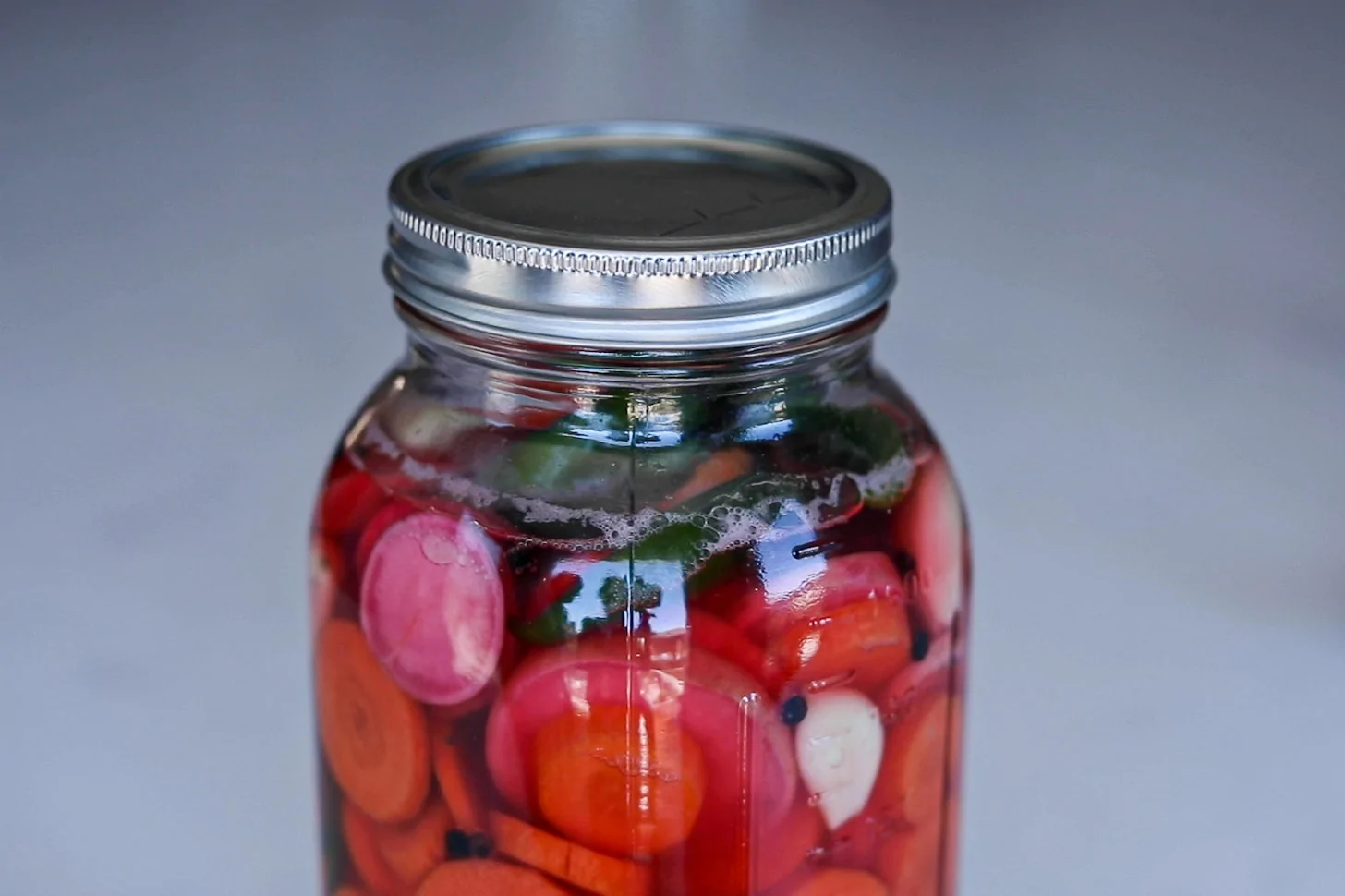
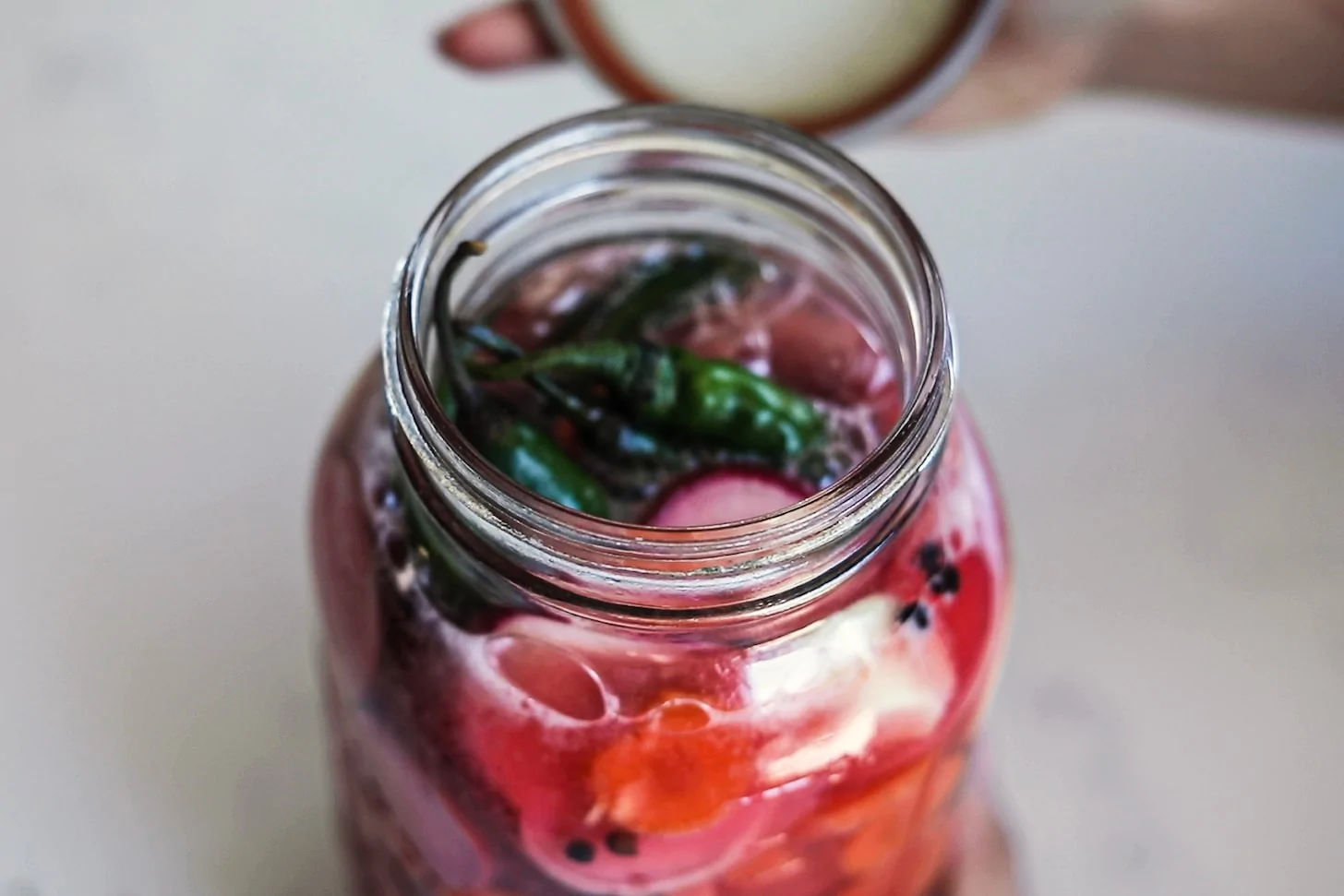
Storage
To store lacto fermented vegetables, you need a cool and dark place. The ideal temperature is between 35 and 40 degrees Fahrenheit. You can either use a refrigerator or a root cellar. Fermented foods need to be kept in a dark place because light will deteriorate the nutrients in your veggies.
Nutrition information
One serving of this fermented vegetables recipe is:
- An excellent source of vitamin C
- An excellent source of vitamin A
- Low carb, 6 g of net carbs
- Low fat
- ~40 calories
- Source of probiotics
*Percent Daily Values are based on a 2000-calorie diet
Tips for novice fermenters
- Use salt that is free of iodine and/or anti-caking agents, which can inhibit fermentation.
- In the summer, the veggies will ferment faster than in the winter, which might take up to 7 days.
Food safe storage and handling
Ensure proper hygiene by using clean hands when reaching into the jar to prevent the introduction of contaminants. Remember, the top of your vegetables (in the jar) is exposed to oxygen, which can promote the growth of yeast and mould – but everything below the brine should be fine because of an oxygen-free environment.
Therefore, regularly inspect the fermented vegetables for any indications of spoilage, such as unusual odours, mould development, or changes in color. If any issues are observed, promptly discard the affected portion.
Similarly, use a clean spoon when serving the fermented vegetables rather than consuming directly from the jar.
Once stored in the refrigerator, these will keep for a couple of months.
Which vegetables can be fermented?
The veggies that can be fermented are primarily vegetables with a high water content like cucumbers, carrots, zucchini, and green peppers. These types of veggies are the most readily fermented as their sugars will readily dissolve in the brine. It is possible to ferment other vegetables, but this process takes longer and results in a more sour-tasting result.
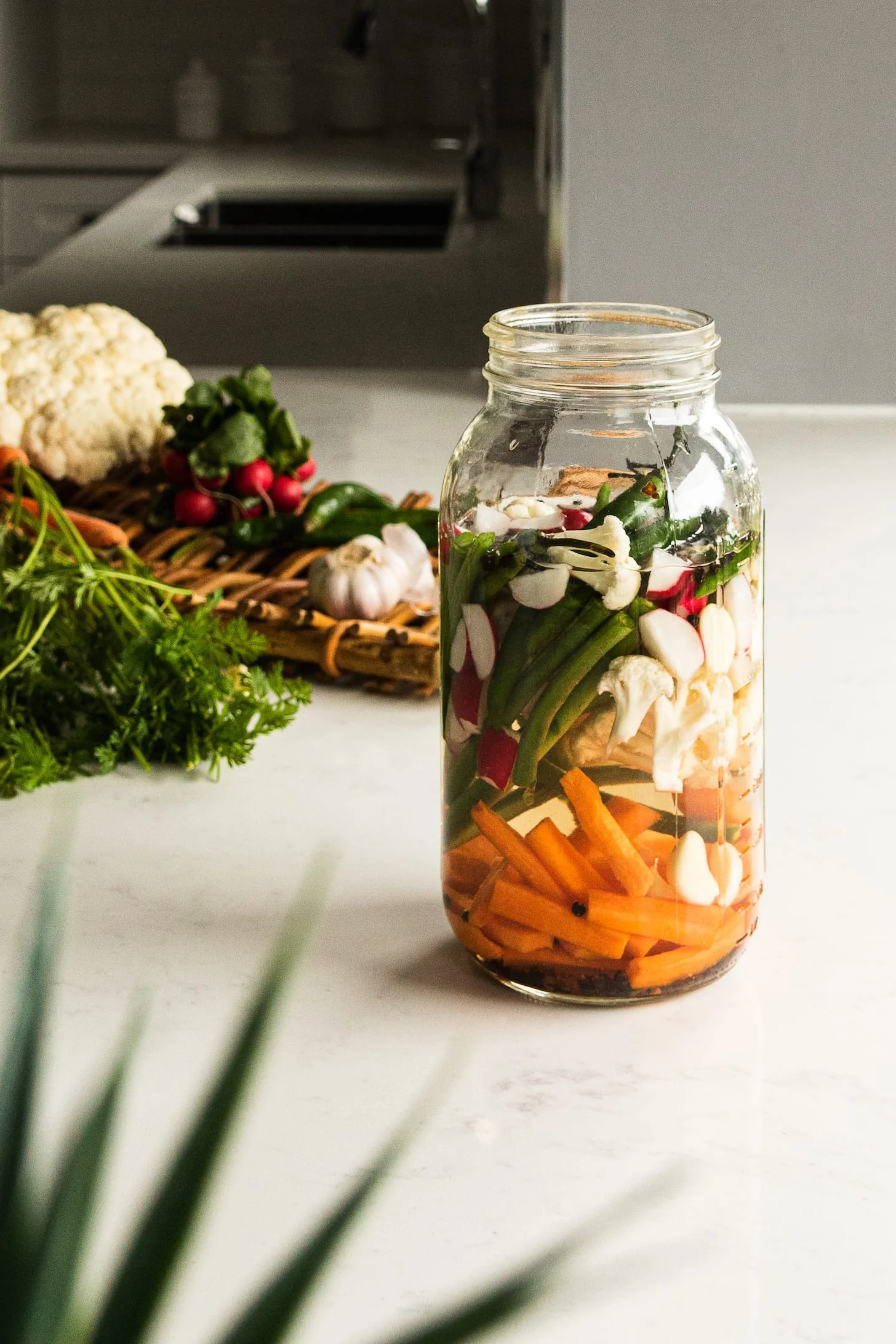
If you try this fermented vegetables recipe, I’d love to hear from you! Leave a comment, rate it, or share a photo and hashtag #desiliciousrd on Instagram. Can’t wait to see your photos.
Video
Ingredients
- 2 tbsp Himalayan salt, sea salt or pickling salt
- 1 litre water, see Recipe Notes
- 1.5 cups cauliflower, small florets
- 6 radishes, cut in quarters
- 1 carrot, large, peeled, cut in strips
- 1 cup Indian green beans, ends trimmed
- 10 cloves garlic, peeled, whole
- 5 green chili, long, whole
- 1 tbsp black peppercorns
Instructions
- Combine salt and water in a measuring cup and stir until the salt is dissolved. Let it come to room temperature before adding to the vegetables
- Place the remaining ingredients in a clean, dry jar.
- Pour the salt water over the vegetables, leaving at least 1 inch of headspace at the top of the jar.
- If necessary, add more water to cover the vegetables.
- Cover the jar tightly and let it stand at room temperature for 2-3 days. If any mold or scum has formed on the top, simply remove.
- Check for the 3 signs (as above) to assess if the fermentation process is successful.
- After the fermentation process is complete, transfer the jar to the refrigerator.
- These fermented vegetables will last for at least a month or longer in the refrigerator.
Notes
Top Tips For Making Easy Fermented Vegetables
- Rinse the vegetables in un-chlorinated water rather than tap water.
Use salt that is free of iodine and/or anti-caking agents, which can inhibit fermentation. Chlorinated water can inhibit fermentation, so use spring, distilled, or filtered water if you can. - Wash your vegetables thoroughly under cold water
- Use a 2 quart jar that’s clean and dry
- Salt type is important. Don’t use salt with iodine – iodine can inhibit fermentation
- Ensure that all the vegetables are fully submerged in the salt water. You can add some more on top to cover the vegetables completely (yes, I will add more!)
- Label the jar with the date when you started fermentation. That way, you’re not left to guess
- In the Summer, the vegetables will ferment faster versus the Winter – which could take up to 7 days
- Remember, the top of your vegetables (in the jar) are exposed to oxygen, which can promote growth of yeast and mold – but everything below the brine should be fine because of an oxygen-free environment. If you notice any mould, discard the layer.
- Always use a clean spoon when serving, versus eating out of the jar. You want to avoid contaminating the entire batch with germs from your mouth
- Once in the fridge, these will keep for several month. Enjoy
Nutrition Information:
Keep in mind that the nutritional values provided are approximations and suggestions, and might fluctuate depending on ingredient variations, portion sizes, and recipe adjustments. This nutrition facts table cannot account for your individual needs. Your body — including your hunger and satiety cues — change daily. It’s perfectly fine to eat more or less on different days. Instead of letting food guilt take over, consider mindful eating.
* Percent Daily Values are based on a 2000 calorie diet.


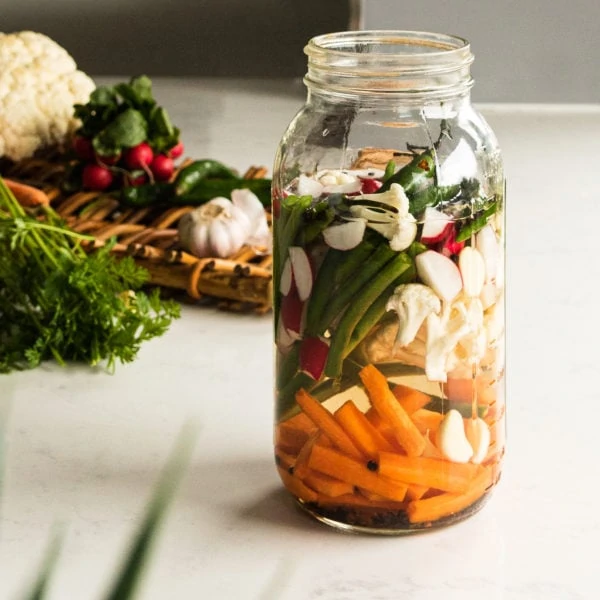



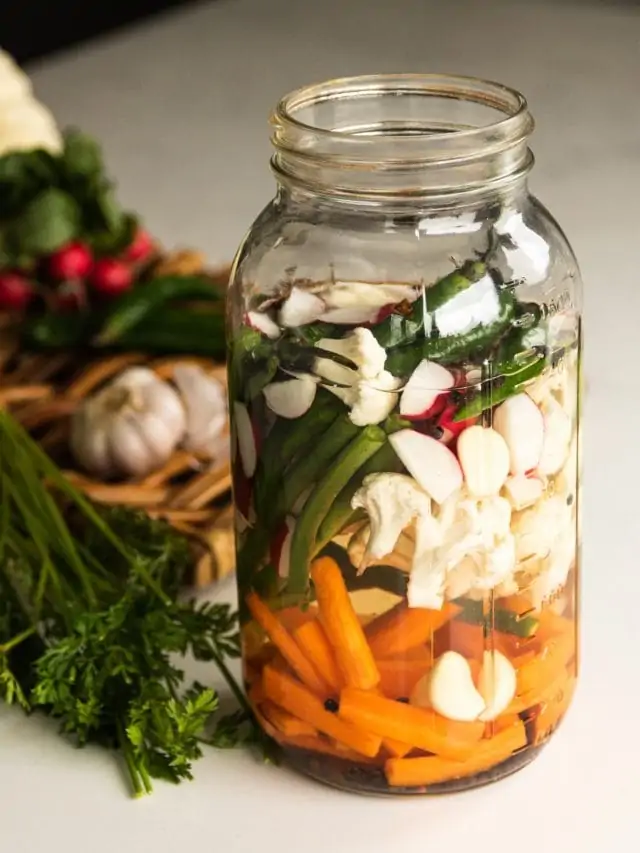
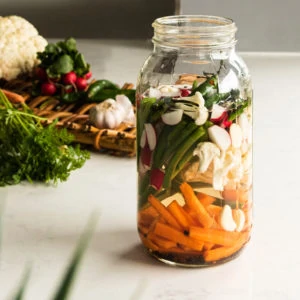




Question. My brine is cloudy after 4 days. Is this normal? I tasted the vegetables on day 4. They tasted salty, the celery was a bit limp. I was expecting more tang. I used well water and Redmond’s Sea Salt. Your thoughts.
Hi Donna! Thanks for reaching out and trying out the recipe! Cloudiness in brine after a few days is quite common. the tanginess develops as the fermentation process progresses. Depending on factors like temperature, vegetable type, and the strength of your brine, it might take a bit longer for the tanginess to develop fully. You might want to consider letting it ferment for a few more days to achieve that desired tanginess. Secondly, the quality of water used can affect fermentation. Well water might contain different mineral compositions or microorganisms that could impact the fermentation process. You could try using filtered or distilled water next time to see if it makes a difference. Hope this helps. 🙂
Fermented veggies, fantastic, love them immediate benefit on the stomach. Can you re-use the Fermented veggies water, say once or more
Hi Ellen, I am so so happy to hear you love this one! It’s my go-to for sure! Theoretically you could once, but be careful of any mould as this could be a heath hazard. Warmly, Shahzadi
Hi. Your video shows you peeling the carrots but the recipe doesn’t specify this step. Is it required?
Hi Brenda, Yes, I peel the carrots. Thanks for alerting me on this one, I will update the recipe. I look forward to hearing how it goes for you 🙂 Warmly, Shahzadi
I’m about to try your recipe for fermented veg. Can most vegetables be fermented like this ?? Also, can I use frozen veg like when I’ve bought fresh and then frozen it myself.
Lastly, if I make two or three jars how long will it keep in a fridge ?
Many thanks in advance
Hi Barry! Sturdy veggies work best for this type of recipe, like cauliflower, carrots, green beans, asparagus, beets, celery, cabbage. I haven’t tried with frozen veggies, I would assume they would turn out a bit soggy. 🙂
In the fermented vegetables recipe you specify Indian green beans. In the pictured finished product of veggies in brine, the green beans look like regular green beans. IF they are different, what is the specific name of the bean?
Hi Katy, thanks for your question. The ones you see in the image are the Indian green beans sold at my local Asian store. You can use regular beans too! Enjoy and let me know how you go. Best wishes, Shahzadi
Another question regarding fermented vegetables. Will freezing kill the probiotics?
Freezing would stop the fermentation process. Based on my quick research, it may kill some probiotics.
I just finished making my first batch of mixed veggies. Now I read that there was a typo regarding the amount of salt. Is 2 Tbs salt per 1 liter water correct or not?
That’s great Belinda. Typo was corrected soon after it was published in Nov. 2 tbsp is correct 🙂 Enjoy and let me know how it turned out!